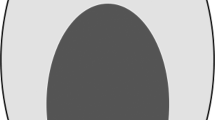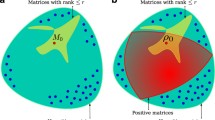Abstract
Quantum channel identification is the metrological determination of one or more parameters of a quantum channel. This is accomplished by passing probes in prepared states through the channel and then statistically estimating the parameter(s) from the measured channel outputs. In quantum channel identification, the channel parameters’ quantum Fisher information is a means to assess and compare different probing schemes. We use quantum Fisher information to study a probing scheme in which the channel is put in indefinite causal order (ICO) with copies of itself, focusing our investigation on probing the qudit (d-dimensional) depolarizing channel to estimate its state preservation probability. This ICO arrangement is one in which both the eigenvectors and eigenvalues of the channel output depend on the channel’s state preservation probability. We overcome this complication to obtain the quantum Fisher information in analytical form. This result shows that ICO-assisted probing yields greater information than does the comparable probe re-circulation scheme with definite causal order, that the information gained is greater when the channel ordering is more indefinite, and that the information gained is greatest when the channel ordering is maximally indefinite. This leads us to conclude that ICO is acting here in a strong sense as an aid to channel probing. The effectiveness of ICO for probing the depolarizing channel decreases with probe dimension, being most effective for qubits.





Similar content being viewed by others
References
Fujiwara, A.: Quantum channel identification problem. Phys. Rev. A 63(4), 042304 (2001)
Frey, M., Collins, D., Gerlach, K.: Probing the qudit depolarizing channel. J. Phys. A Math. Theor. 44(20), 205306 (2011)
Paris, M.G.: Quantum estimation for quantum technology. Int. J. Quantum Inf. 7(supp01), 125–137 (2009)
Chiribella, G.: Perfect discrimination of no-signalling channels via quantum superposition of causal structures. Phys. Rev. A 86(4), 040301 (2012)
Guerin, P.A., Feix, A., Araujo, M., Brukner, C.: Exponential communication complexity advantage from quantum superposition of the direction of communication. Phys. Rev. Lett. 117(10), 100502 (2016)
Oreshkov, O., Costa, F., Brukner, C.: Quantum correlations with no causal order. Nat. Commun. 3, 1092 (2012)
Ebler, D., Salek, S., Chiribella, G.: Enhanced Communication with the Assistance of Indefinite Causal Order (2017) arXiv preprint. arXiv:1711.10165
Hardy, L.: Quantum Gravity Computers: On the Theory of Computation with Indefinite Causal Structure. In: Quantum Reality, Relativistic Causality, and Closing the Epistemic Circle. The Western Ontario Series in Philosophy of Science 73, 379 (2009)
Chiribella, G., D’Ariano, G.M., Perinotti, P., Valiron, B.: Quantum computations without definite causal structure. Phys. Rev. A 88(2), 022318 (2013)
Helstrom, C.W.: Minimum mean-squared error of estimates in quantum statistics. Phys. Lett. A 25(2), 101–102 (1967)
Nielsen, M.A., Chuang, I.L.: Quantum Computation and Quantum Information. Cambridge University Press, Cambridge (2010)
Procopio, L.M., Moqanaki, A., Araujo, M., Costa, F., Calafell, I.A., Dowd, E.G., Hamel, D.R., Rozema, L.A., Brukner, C., Walther, P.: Experimental superposition of orders of quantum gates. Nat. Commun. 6, 7913 (2015)
Frey, M., Collins, D.: Quantum Fisher information and the qudit depolarization channel. In: Quantum Information and Computation VII (Vol. 7342, p. 73420N). International Society for Optics and Photonics (2009, April)
S̆afránek, D.: A simple expression for the quantum Fisher information matrix (2018) arXiv preprint. arXiv:1801.00945
Coecke, B., Fritz, T., Spekkens, R.W.: A mathematical theory of resources. Inf. Comput. 250, 59–86 (2016)
Author information
Authors and Affiliations
Corresponding author
Additional information
Publisher's Note
Springer Nature remains neutral with regard to jurisdictional claims in published maps and institutional affiliations.
Official contribution of the National Institute of Standards and Technology; not subject to copyright in the United States.
Appendix
Appendix
This “Appendix” proves inequalities (50) and (51). We assume that \(0< \theta < 1\) and that the integers m, d satisfy \(m,d\ge 2\). Recall that
Proof of inequality (50): Define the random variable X such that \(P\{X=\theta \}=\frac{d-1}{d}\) and \(P\{ X=1\} =\frac{1}{d}\). The function \(f(x)=x^m\) is strictly convex over the interval \([\theta ,1]\) so \(E[X^m] > E[X]^m\) according to Jensen’s inequality. Rewriting these expectations in terms of the distribution of X, we have
This inequality can be written
from which inquality (50) follows.
Proof of inequality (51): We have \(x(\theta )/d < \theta \) and \(y(\theta )/d < 1\) so
or, equivalently,
Then, \(x(\theta )-y(\theta ) = 2(1-\theta )\) so
and inequality (51) follows.
Rights and permissions
About this article
Cite this article
Frey, M. Indefinite causal order aids quantum depolarizing channel identification. Quantum Inf Process 18, 96 (2019). https://doi.org/10.1007/s11128-019-2186-9
Received:
Accepted:
Published:
DOI: https://doi.org/10.1007/s11128-019-2186-9




